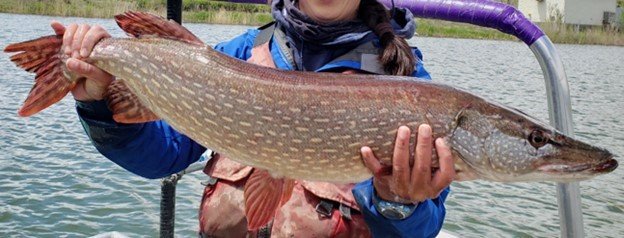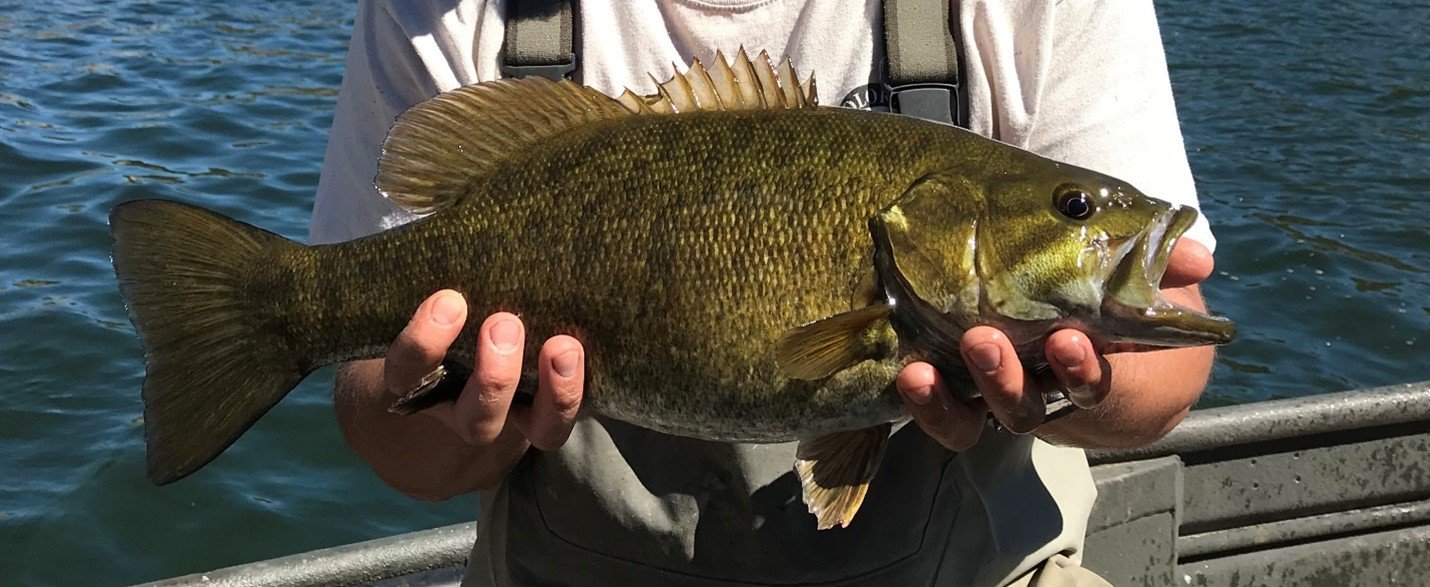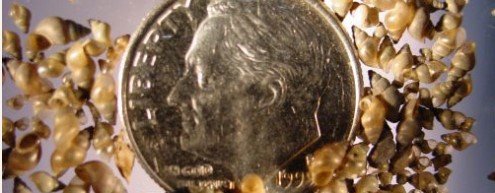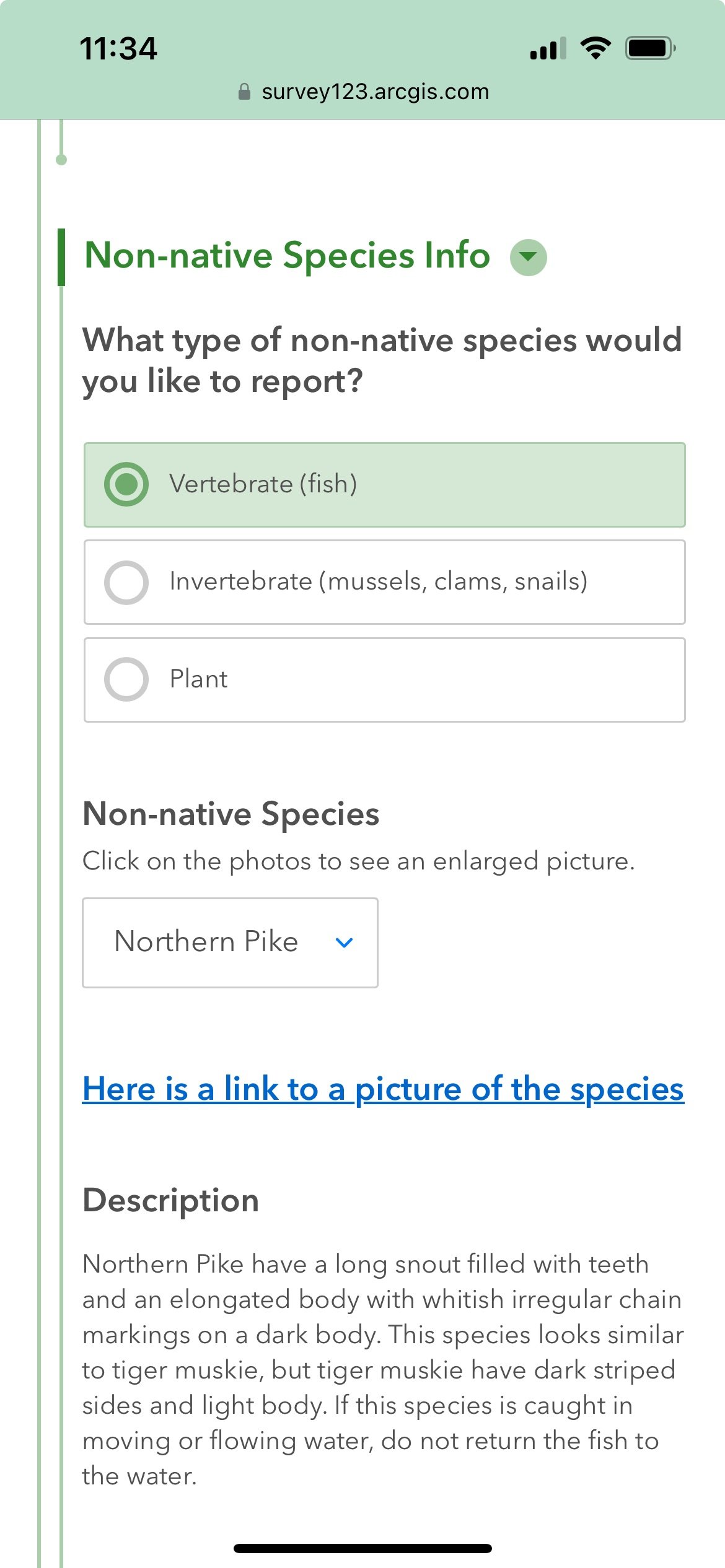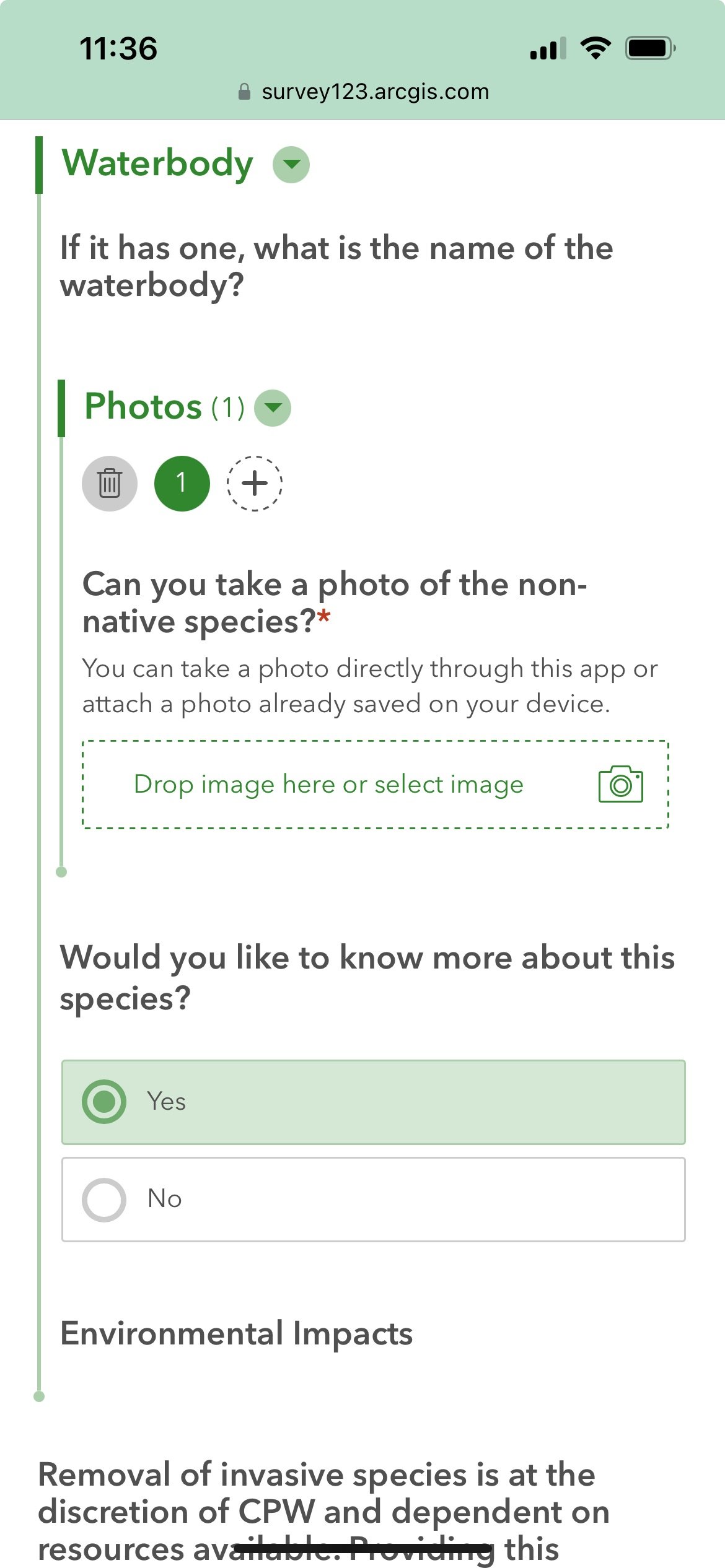MCWC and CNHP Roll Out Non-native Species Reporting App
A new nuisance species reporting app will enlist the help of anglers and outdoor recreators to report captures and sightings of priority nonnative species. The user-friendly platform for monitoring and reporting uses ArcGIS and Survey 1-2-3 and was developed by Tom Baldvins from the Colorado Natural History Program (CNHP) at CSU.
Users of the new app will identify where they encountered a nonnative species, and they can upload specific locations, descriptions and photos. A real-time notification will be sent to Colorado Parks and Wildlife (CPW), who will review the alert to determine the accuracy of the information provided by the user and then take their necessary course of action.
The information will reside on a centralized database to store the reported sightings. Data analytics will identify patterns and trends in nonnative species occurrences, aiding in informed decision-making for planning and mitigation strategies.
Citizen science programs like this reporting app are useful to help aquatic resource managers track invasions of non-native species in areas they may not have the time or resources to cover. Early detection of these nuisance species can be instrumental for developing a removal plan before invaders become established.
The app is set to track invasive species in the northwest quarter of Colorado, but it can be expanded later to a larger geographic area and additional nuisance species can also be added.
The application can function as an educational tool that provides background information, identification characteristics, and pictures of the nuisance species.
Aquatic resource managers at Colorado Parks and Wildlife have identified several priority invaders of top concern. These reportable species are separated into three categories within the application: vertebrates, invertebrates, and plants.
Vertebrates include fish species such as northern pike, smallmouth bass, walleye, burbot, and striped bass. These fish species can predate on and outcompete native species. Northern pike, smallmouth bass, and walleye are especially dangerous because they can reproduce successfully within the river system. Catching any of these species in river systems in Colorado should result in their immediate termination; do not return these species to the water.
Invertebrate species include the rusty crayfish and New Zealand mud snail, as well as zebra and quagga mussels. Invertebrate species are typically very small, easily transferable, and can be highly devastating to ecosystems. Follow principles of rinse, drain, dry of all gear, equipment, and boats to ensure invasive aquatic invertebrates are not unintentionally transferred.
Eurasian watermilfoil is the only aquatic plant species currently reportable on this application. Eurasian watermilfoil is a plant species that creates vast mats of vegetation throughout the water column. Watermilfoil is the worst noxious aquatic weed in Colorado. They are often introduced illegally through aquarium dumping. If you witness someone introducing fish or aquarium species to a body of water, contact Operation Game Thief at 1-877-COLO-OGT [ 1-877-265-6648] or email game.thief@state.co.us

